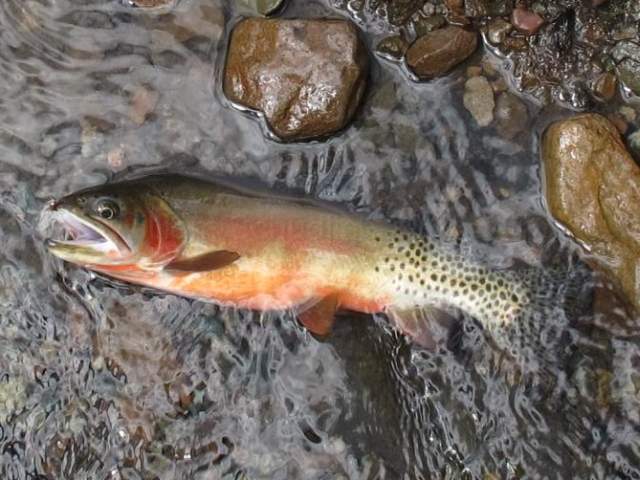Agencies cooperate to conserve Rio Grande cutthroat
SANTA FE, New Mexico:
[dropcap]T[/dropcap]he states of New Mexico and Colorado, three Native American tribes, and several federal agencies recently signed an updated conservation agreement and strategy plan to conserve Rio Grande cutthroat trout. Managers hope the agreement will prevent the need for federal protection. The U.S. Fish and Wildlife Service is scheduled to decide on whether to list the species in September.
“This 10-year agreement provides a detailed road map of the ways local, state, federal and tribal agencies will work together to continue to conserve this trout,” said Kirk Patten, assistant chief of fisheries for the New Mexico Department of Game and Fish. “The Rio Grande cutthroat trout is unique. It is found only in the desert southwest and has the distinction of being the southernmost distribution of any form of cutthroat trout.”
New Mexico classifies the Rio Grande cutthroat as a species of “greatest conservation need,” and Colorado lists it as a “species of special concern.” The trout has been a candidate for listing under the federal Endangered Species Act since 2008.
Rio Grande cutthroat trout face many threats, including habitat loss, competition from non-native fish, drought, fire and climate change.
Over the last 150 years, the historic range of Rio Grande cutthroat trout has been greatly reduced. The trout now occupies 10 percent of its historic distribution in approximately 600 miles of stream. The fish primarily lives in high elevation streams and lakes of the Rio Grande, the Canadian River and the Pecos River basins in New Mexico and Colorado.
Since signing the original range wide agreement in 2003, New Mexico and Colorado have restored Rio Grande cutthroat trout to nearly 100 miles of stream and 27 acres of lake.
“The most effective way to restore the state fish is through these ongoing coordinated efforts,” Department Fisheries Chief Mike Sloane said.
Participating agencies include the U.S. Forest Service, the U.S. Fish and Wildlife Service, the Bureau of Land Management, the National Park Service, the Jicarilla-Apache Nation, Mescalero Apache Nation and the Taos Pueblo. The New Mexico Council of Trout Unlimited and Colorado Trout Unlimited also support the effort.
Under the agreement, partners will continue to maintain a brood of Rio Grande cutthroat trout for stocking. They also plan to survey streams and improve habitat; construct barriers to keep non-native trout out of conservation waters; remove non-native fish, such as rainbow trout, from Rio Grande cutthroat historic habitat and restock with Rio Grande cutthroat; test for disease; conduct genetic analysis; and track wild population numbers.
For more information about Rio Grande cutthroat trout restoration and angling in New Mexico, click here


